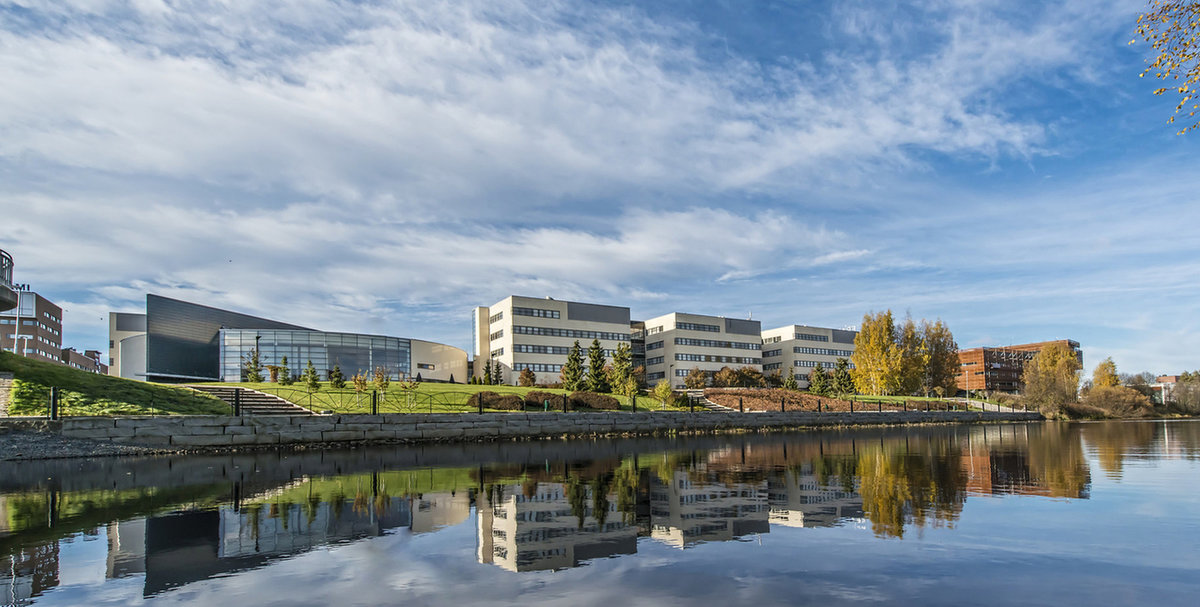Food via ones and zeroes
Digital and smart tools and the opportunities they offer infuse our whole society. Ones and zeroes are staking a claim on our plates, too, as the whole food-system is being digitalized starting from the fields and farms.

For some, the idea of combining the bytes of the digital world and agriculture might not appear as desirable partners, but digitalization will revolutionize the way we grow, transport, and consume food. In Finland alone, the sector is worth billions of euros and it affects our self-sufficiency and employment markets.
The ongoing revolution is visible also to the private consumers as the whole chain of food production is growing ever more efficient. Additionally, products are distributed through a greater number of outlets, and the consumer can check their food’s purity and safety as the whole chain is made more transparent, says Sanna Kankaanpää from Into Seinäjoki Ltd. Additionally, for example retailers can check their products’ origins easily and quickly.
According to Kankaanpää, the efficiency of the food chain is made evident, among other things, at the starting end of the chain, as more and more equipment in farming are automated, and the producers are always on the lookout for new, more efficient solutions. One these has been the use of unmanned drones in farming which enable the farmers and agricultural researchers to gain more information and data on crops and possible damage to the harvest. Digitalization can also reduce the amount work that goes into reporting that the various actors within the chain must do. All those involved in the food production chain must be aware of the new tools and opportunities in order to make the best use out of them, Kankaanpää stresses.

Kankaanpää has been involved in the New Digital Solution in Food Systems – from ideas and concepts towards piloting project, which mapped out the knowledge levels and the abilities to utilize these new tools among the various actors in Southern-Ostrobothnia. The project was on the lookout for new opportunities within the food production chain, and through it, the actors involved examined the effects of digitalization on the whole chain. According to Kankaanpää, the project was especially interested in the prospects of using open data in further developing the efficiency of the food production chain. An important aspect that arose during the project was the dissemination of information about the effects of digitalization to the companies and corporations within the region.
“Some of the companies were well aware of the digitalization and the tools it offers but there were some who were unclear about how it might affect them”, Kankaanpää explains. She says that one should be careful in generalizing the attitudes and capabilities of the companies, as among the rookies there were those who had invested heavily in digitalization from the very beginning.
Kankaanpää explains that, during the project, the resources and the capabilities of the companies within the region were researched and mapped out through questionnaires and investigations. As for the open data banks, they were collected both from regional and national sources with the hope that they could be further utilized in developing new services. The data banks can include, for example, cultivation plans that the farmers make.
The project also organized workshops and other events and activities, which proved to be very popular, gathering around twenty participants. One of the most visible ones was the event called AgroBioHack. The event was organized in Seinäjoki in May 2017 and its aim was to create new digital solutions pertaining to the supply and demand processes of botanical raw materials. There were seven teams competing in the event, of which several worked in the ICT-sector.
“Even though the region does not boast as large an ICT-cluster than, for example, Oulu or Tampere, the enthusiasm spread from the newer companies even to the older ones”, Kankaanpää enthuses.
The AgroBioHack event, which was based on the hackathon model, was not the only event that the people working on the project created. They also participated in the organization of a new event, called Food Business Summit, which is aimed at the companies, researchers, and other actors who are engaged in the processes of the food production chain. Through the project, the event boasted, for example, keynote speakers and panel discussions, which focused on digitalization and platform economy. The activities were aimed at familiarizing the various actors on the themes of digitalization, Kankaanpää describes.

With the end of the project in the summer of 2017, the regional companies and other actors are significantly better off knowing about the tools and opportunities offered by digitalization, and they are in a good position to utilize them in the future, Kankaanpää says. At the same time, they are also able to detect and deter any threats that might arise from digitalization, the biggest of which include security concerns and human errors, Kankaanpää explains. They are, then, the same universal threats of our digital world.
The companies and other actors operating in the region were, according to Kankaanpää, interested in the project and its innovative and novel approach to the digitization of the food production chain. In addition, the partners offered great advice and expert help to the organizers of the project.
The region is well aware of the potential inherent in bringing together digitalization and the systems of the food production chain. The region’s strategy for smart specialization includes the focus on the sustainable and innovative development of the systems of food production. A significant share of the region’s GDP is linked to the systems of food production, starting from the primary sector and ending with the end processing of products. In addition, the region is a major manufacturer of the various machines and equipment used in the sector.